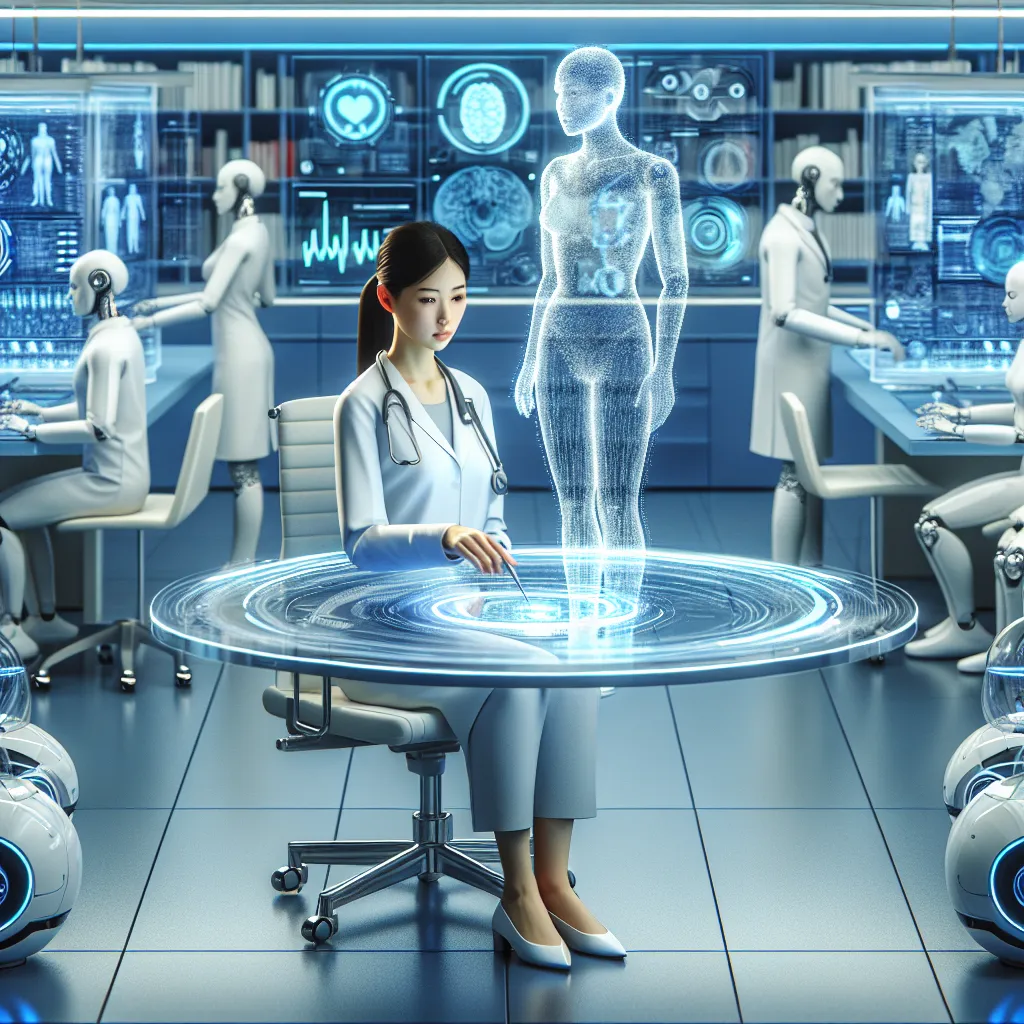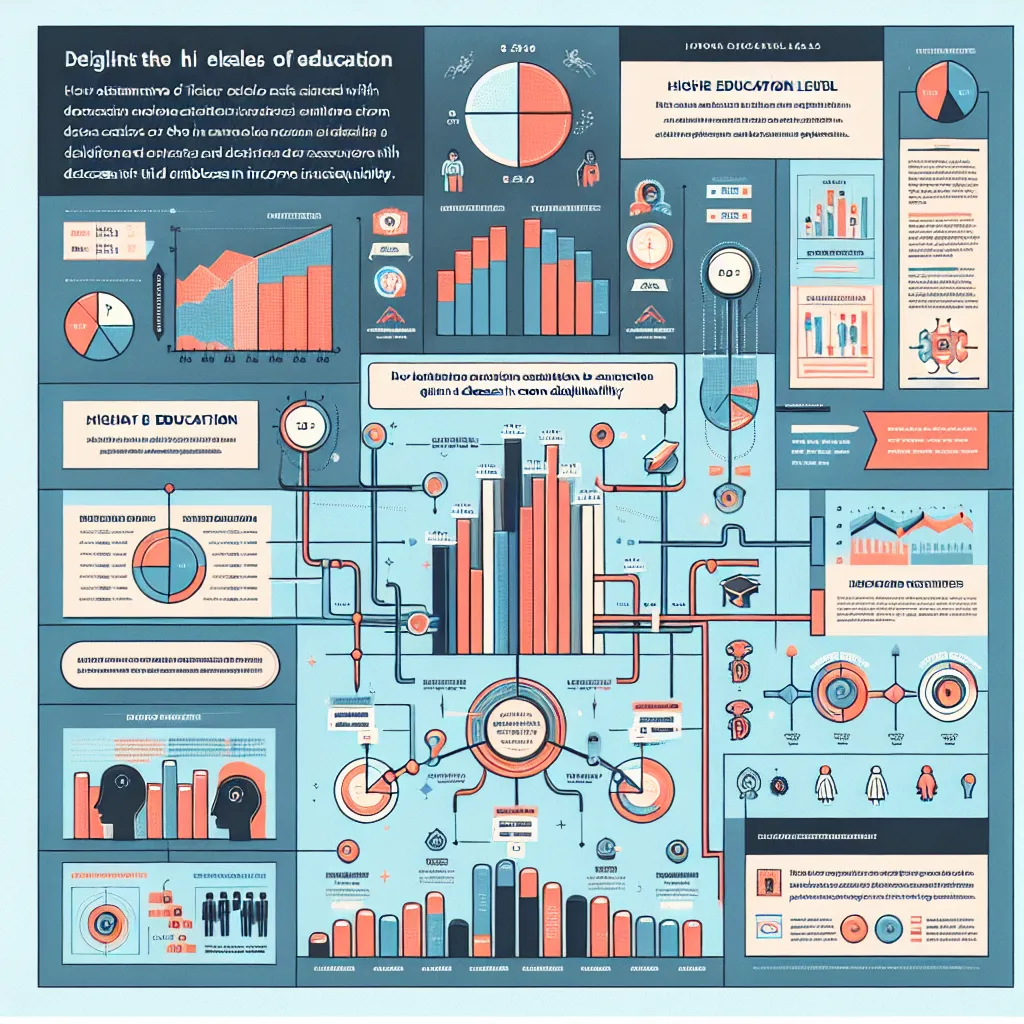Welcome to our IELTS Reading practice test focused on the fascinating topic of “How AI is Improving Healthcare Diagnostics.” This comprehensive test will help you prepare for the IELTS Reading section while exploring the cutting-edge advancements in medical technology. Let’s dive into the world of artificial intelligence and its impact on healthcare!
Table Of Contents
 AI in Healthcare Diagnostics
AI in Healthcare Diagnostics
IELTS Reading Test: AI in Healthcare Diagnostics
Passage 1 – Easy Text
Artificial Intelligence (AI) is revolutionizing the healthcare industry, particularly in the field of medical diagnostics. This cutting-edge technology is transforming the way doctors detect and diagnose diseases, leading to more accurate and timely treatments. One of the most significant areas where AI is making a difference is in medical imaging.
AI-powered systems can analyze medical images such as X-rays, MRIs, and CT scans with remarkable precision. These systems use complex algorithms to identify patterns and anomalies that might be difficult for human eyes to detect. For example, AI can help radiologists spot early signs of lung cancer in chest X-rays or identify potential brain tumors in MRI scans.
Another area where AI is improving healthcare diagnostics is in the analysis of patient data. Machine learning algorithms can process vast amounts of patient information, including medical history, genetic data, and lifestyle factors, to identify potential health risks and predict disease outcomes. This capability allows healthcare providers to offer more personalized and preventive care to their patients.
AI is also enhancing the accuracy of laboratory tests. Automated systems equipped with AI can analyze blood samples, tissue specimens, and other biological materials with greater speed and precision than traditional methods. This not only reduces the risk of human error but also allows for faster turnaround times, enabling doctors to make quicker treatment decisions.
In addition to improving diagnostic accuracy, AI is also helping to address the global shortage of healthcare professionals. In many parts of the world, there is a lack of skilled medical specialists, particularly in rural and underserved areas. AI-powered diagnostic tools can assist general practitioners and healthcare workers in making more informed decisions, even without immediate access to specialists.
As AI continues to advance, it is expected to play an increasingly important role in healthcare diagnostics. However, it’s important to note that AI is not meant to replace human doctors but rather to augment their capabilities. The combination of human expertise and AI technology has the potential to significantly improve patient outcomes and revolutionize the healthcare industry.
Questions for Passage 1
1-5. Do the following statements agree with the information given in the passage?
Write:
TRUE if the statement agrees with the information
FALSE if the statement contradicts the information
NOT GIVEN if there is no information on this
- AI is only being used in medical imaging and not in other areas of healthcare diagnostics.
- AI-powered systems can analyze medical images more accurately than human radiologists.
- Machine learning algorithms can process patient data to predict potential health risks.
- AI-enhanced laboratory tests are slower but more accurate than traditional methods.
- AI is expected to completely replace human doctors in the future.
6-10. Complete the sentences below.
Choose NO MORE THAN TWO WORDS from the passage for each answer.
- AI uses ____ ____ to identify patterns in medical images that humans might miss.
- The analysis of patient data by AI allows for more ____ and ____ care.
- AI-equipped ____ ____ can analyze biological samples faster than traditional methods.
- AI-powered diagnostic tools can help address the global ____ of healthcare professionals.
- The combination of human expertise and AI has the potential to improve ____ ____.
Passage 2 – Medium Text
The integration of Artificial Intelligence (AI) into healthcare diagnostics represents a paradigm shift in medical practice. This technological revolution is not only enhancing the accuracy and efficiency of diagnoses but also paving the way for more personalized and predictive healthcare approaches. As we delve deeper into the applications of AI in medical diagnostics, it becomes evident that we are on the cusp of a new era in healthcare.
One of the most promising areas where AI is making significant strides is in the early detection of diseases. Machine learning algorithms, trained on vast datasets of medical images and patient records, can identify subtle indicators of diseases long before they become apparent to human observers. For instance, AI systems have demonstrated remarkable accuracy in detecting early signs of diabetic retinopathy, a condition that can lead to blindness if left untreated. By analyzing retinal images, these systems can flag potential cases for further examination by ophthalmologists, potentially saving the eyesight of millions.
In the realm of oncology, AI is proving to be an invaluable ally in the fight against cancer. Advanced neural networks can analyze pathology slides with a level of detail and consistency that surpasses human capabilities. These AI systems can detect cancerous cells, classify tumor types, and even predict the aggressiveness of certain cancers. This not only speeds up the diagnostic process but also helps oncologists tailor treatment plans more effectively.
The potential of AI in diagnostics extends beyond image analysis. Natural Language Processing (NLP) algorithms are being employed to mine valuable information from unstructured medical data, such as clinical notes and research papers. These systems can extract relevant patient information, identify potential drug interactions, and even suggest diagnostic hypotheses based on a patient’s symptoms and medical history. This capability is particularly useful in rare disease diagnosis, where the AI can draw connections that might not be immediately apparent to human clinicians.
Moreover, AI is playing a crucial role in the emerging field of precision medicine. By analyzing an individual’s genetic profile, lifestyle factors, and medical history, AI systems can predict disease susceptibility and drug responsiveness with unprecedented accuracy. This allows for highly personalized treatment plans and preventive strategies, moving us closer to the ideal of truly individualized healthcare.
However, the integration of AI into healthcare diagnostics is not without challenges. Ethical considerations, data privacy concerns, and the need for regulatory frameworks are all important issues that need to be addressed. Additionally, there is a pressing need for healthcare professionals to be trained in the use and interpretation of AI-generated insights to ensure optimal utilization of these powerful tools.
As we look to the future, it is clear that AI will continue to play an increasingly important role in healthcare diagnostics. The potential benefits in terms of improved patient outcomes, reduced healthcare costs, and more efficient use of medical resources are immense. However, it is crucial to remember that AI is a tool to augment human expertise, not replace it. The most effective healthcare systems of the future will likely be those that successfully combine the analytical power of AI with the intuition, empathy, and decision-making skills of human healthcare professionals.
Questions for Passage 2
11-14. Choose the correct letter, A, B, C, or D.
-
According to the passage, AI in healthcare diagnostics is:
A) A minor improvement in medical practice
B) A fundamental change in how medicine is practiced
C) Only useful for image analysis
D) Replacing human doctors entirely -
In the field of oncology, AI systems can:
A) Cure cancer
B) Only detect cancerous cells
C) Analyze pathology slides and provide detailed information about tumors
D) Replace oncologists in treatment planning -
Natural Language Processing algorithms in healthcare can:
A) Only analyze clinical notes
B) Extract information from unstructured data and suggest diagnostic hypotheses
C) Replace doctors in rare disease diagnosis
D) Directly interact with patients -
The passage suggests that the future of healthcare will likely involve:
A) AI completely replacing human healthcare professionals
B) Human professionals working without any AI assistance
C) A combination of AI analytical power and human expertise
D) Patients diagnosing themselves using AI tools
15-20. Complete the summary below.
Choose NO MORE THAN TWO WORDS from the passage for each answer.
AI is revolutionizing healthcare diagnostics in various ways. In the field of early disease detection, (15) ____ ____ can identify subtle signs of conditions like diabetic retinopathy. For cancer diagnosis, (16) ____ ____ analyze pathology slides with great detail. (17) ____ ____ ____ is used to extract information from unstructured medical data. AI also plays a crucial role in (18) ____ ____, which allows for personalized treatment plans. However, the integration of AI in healthcare faces challenges such as (19) ____ ____ and data privacy issues. Despite these challenges, AI is expected to bring significant benefits, including improved patient outcomes and (20) ____ ____ ____.
Passage 3 – Hard Text
The advent of Artificial Intelligence (AI) in healthcare diagnostics marks a pivotal juncture in the evolution of medical science. This technological renaissance is not merely enhancing existing diagnostic paradigms but is fundamentally reshaping the landscape of disease detection, prognosis, and treatment planning. The synergistic integration of AI with traditional medical practices is ushering in an era of unprecedented precision and efficiency in healthcare delivery.
One of the most salient manifestations of AI’s impact on healthcare diagnostics is in the domain of medical imaging. Convolutional neural networks (CNNs), a class of deep learning algorithms particularly adept at image analysis, are revolutionizing the interpretation of radiological data. These sophisticated systems can discern subtle anomalies in X-rays, MRIs, and CT scans that might elude even the most experienced radiologists. For instance, AI algorithms have demonstrated remarkable proficiency in detecting early signs of lung nodules, potentially indicative of cancer, with a level of accuracy that surpasses human capabilities. This not only expedites the diagnostic process but also significantly enhances the likelihood of early intervention, a critical factor in improving patient outcomes.
The transformative potential of AI extends beyond mere image analysis. In the realm of genomics and proteomics, machine learning algorithms are decoding the intricate relationships between genetic variations and disease susceptibility. By analyzing vast datasets of genetic information, these systems can identify novel biomarkers and predict an individual’s predisposition to certain diseases with unprecedented accuracy. This capability is particularly valuable in the context of rare genetic disorders, where traditional diagnostic methods often fall short. AI-driven genomic analysis is paving the way for truly personalized medicine, enabling clinicians to tailor treatment strategies to an individual’s unique genetic profile.
Moreover, AI is proving to be an invaluable asset in the field of pathology. Digital pathology platforms, augmented by AI algorithms, are transforming the way tissue samples are analyzed. These systems can quantify cellular features, detect subtle morphological changes, and even predict tumor behavior with a level of precision and consistency that is difficult to achieve through manual examination alone. This not only enhances diagnostic accuracy but also facilitates more informed decision-making in treatment planning.
The integration of AI into healthcare diagnostics is also addressing one of the most pressing challenges in global healthcare: the shortage of medical specialists. In resource-limited settings, AI-powered diagnostic tools can serve as a force multiplier, enabling healthcare workers with limited training to make more accurate diagnoses. For example, AI systems trained to interpret chest X-rays can assist in the detection of tuberculosis in regions where radiologists are scarce, potentially saving countless lives.
However, the implementation of AI in healthcare diagnostics is not without its complexities. The ethical implications of relying on AI for critical medical decisions are profound and multifaceted. Questions of accountability, transparency, and potential biases in AI algorithms need to be carefully addressed. Furthermore, the integration of AI into existing healthcare systems poses significant technological and logistical challenges. Issues of data privacy, interoperability between different AI systems, and the need for robust regulatory frameworks are all critical considerations that must be navigated.
Despite these challenges, the trajectory of AI in healthcare diagnostics is undeniably upward. As the technology continues to evolve, we can anticipate even more sophisticated applications. Quantum computing, for instance, holds the promise of exponentially increasing the processing power available for AI algorithms, potentially leading to breakthroughs in complex areas such as protein folding prediction and drug discovery.
In conclusion, the integration of AI into healthcare diagnostics represents a paradigm shift of monumental proportions. While it is not a panacea for all the challenges facing modern healthcare, its potential to enhance diagnostic accuracy, expedite treatment decisions, and democratize access to specialist-level care is undeniable. As we navigate this new frontier, it is crucial to strike a balance between embracing the transformative potential of AI and maintaining the human touch that is integral to the practice of medicine. The future of healthcare lies not in the replacement of human expertise by AI, but in the symbiotic relationship between human intuition and machine intelligence, working in concert to deliver the best possible outcomes for patients.
Questions for Passage 3
21-26. Complete the summary below.
Choose NO MORE THAN THREE WORDS from the passage for each answer.
AI is revolutionizing healthcare diagnostics in various ways. In medical imaging, (21) ____ ____ ____ can detect subtle anomalies in scans. In genomics, AI helps identify (22) ____ ____ and predict disease susceptibility. AI-augmented (23) ____ ____ ____ are transforming tissue sample analysis. AI is also addressing the (24) ____ ____ ____ in global healthcare. However, the implementation of AI faces challenges, including (25) ____ ____ and the need for robust (26) ____ ____.
27-30. Choose the correct letter, A, B, C, or D.
-
According to the passage, the integration of AI in healthcare diagnostics:
A) Is a minor improvement in medical practice
B) Is fundamentally reshaping disease detection and treatment planning
C) Will completely replace human doctors
D) Is only useful in developed countries -
The passage suggests that AI in pathology:
A) Can only detect cellular features
B) Is less accurate than manual examination
C) Can predict tumor behavior with high precision
D) Is not useful for treatment planning -
The author’s stance on the future of AI in healthcare is:
A) Highly skeptical
B) Cautiously optimistic
C) Entirely negative
D) Unreservedly enthusiastic -
The conclusion of the passage emphasizes:
A) AI will completely replace human doctors
B) The need for a balance between AI and human expertise
C) The limitations of AI in healthcare
D) The superiority of AI over human diagnostics
31-35. Do the following statements agree with the information given in the passage?
Write:
TRUE if the statement agrees with the information
FALSE if the statement contradicts the information
NOT GIVEN if there is no information on this
- AI algorithms can detect lung nodules more accurately than experienced radiologists.
- AI-driven genomic analysis is not useful for rare genetic disorders.
- The integration of AI into healthcare diagnostics poses no ethical challenges.
- Quantum computing may lead to breakthroughs in protein folding prediction and drug discovery.
- The passage suggests that AI will eventually replace all human involvement in medical diagnostics.
Answer Key
-
FALSE
-
NOT GIVEN
-
TRUE
-
FALSE
-
FALSE
-
complex algorithms
-
personalized, preventive
-
Automated systems
-
shortage
-
patient outcomes
-
B
-
C
-
B
-
C
-
Machine learning
-
Advanced neural networks
-
Natural Language Processing
-
precision medicine
-
ethical considerations
-
reduced healthcare costs
-
Convolutional neural networks
-
novel biomarkers
-
digital pathology platforms
-
shortage of medical specialists
-
ethical implications
-
regulatory frameworks
-
B
-
C
-
B
-
B
-
TRUE
-
FALSE
-
FALSE
-
TRUE
-
FALSE
This IELTS Reading practice test has provided a comprehensive exploration of how AI is improving healthcare diagnostics. By engaging with these passages and questions, you’ve not only prepared for the IELTS exam but also gained valuable insights into the cutting-edge advancements in medical technology.
For more information on related topics, you might be interested in our articles on The Role of AI in Reducing Healthcare Costs and The Rise of AI in Personalized Healthcare. These resources can provide additional context and help you further understand the impact of AI on the healthcare industry.
Remember, practice makes perfect! Keep honing your reading skills and expanding your knowledge on various topics to excel in your IELTS Reading test. Good luck with your IELTS preparation!


